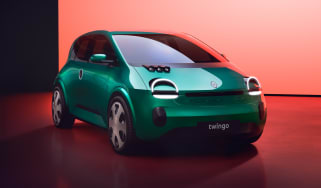McLaren P1: Latest details
McLaren P1 latest details, including the lowdown on its F1-inspired design
The McLaren P1 has just been revealed at the Paris Motor Show. The P1 shown here is a design study that’s “about 95 per cent correct” as to what the production model will look like when it makes its debut at the Geneva Motor Show in March 2013.
McLaren calls the P1 its “ultimate supercar,” and while it refused to reveal anything about the car’s powertrain, aside from stating that the definitive engine and transmission specification hasn’t quite been finalized yet, the firm did confirm that the P1 will develop “over 592bhp per tonne.” We expect the car to produce in excess of 700bhp, and be boosted by an F1-style KERS system too.
Talking about the car, McLaren Automotive Managing Director Antony Sheriff said, “Our aim is not necessarily to be the fastest in absolute top speed but to be the quickest and most rewarding series production road car on a circuit.”
To that end, the P1 is packed with ideas taken from McLaren’s 50-year racing heritage. The design was honed in McLaren’s wind tunnel and CFD software was used extensively to ensure that the P1’s shape is as aerodynamically efficient as possible.
The frontal area has been kept to a minimum, so the main intakes for the engine are in the doors, rather than the P1’s nose. The windscreen and roof form a teardrop shape, giving good visibility while also maintaining a clean flow of air to the active rear wing.
Just like a current F1 car, the wing has two settings. In drag reduction mode it lies flat, minimizing drag and maximizing speed, while the wing can extend rearwards by up to 300mm on a racetrack, and by up to 120mm on the road, in High Performance mode.
The wing works in tandem with flaps which automatically open and close ahead of the front wheels, controlling the air flow around the car. McLaren claims that the P1 generates 600kg of downforce at 150mph, the same amount as the MP4-12C GT3 racer.
The P1’s design has been honed to leave the bodywork stripped to a bare minimum. The front and rear ends of the car are formed from huge carbon fibre clamshells which are designed to wrap the P1’s mechanicals as closely as possible to save weight.
The lights have been pared back too, with the fronts being all LED units which feature daytime running lights in the shape of McLaren’s logo, while the novel rear LED light strips, which will make production, mean that a large honeycombed area can be used for cooling the engine.
Underneath, the P1 uses a development of the carbon fibre MonoCell used on the 12C. Called the MonoCage, it adds a carbon fibre loop into the roof, which serves both as a roll bar and as the location of the air scoop which feeds air to the mid-mounted engine.
In a nod to the original McLaren F1, the P1 features gold leaf heat shield around the exhaust, as gold is simply the best material for reflecting heat despite the cost implications.
The P1 will go head-to-head with the Porsche 918 and next Ferrari Enzo, so expect a prices to start somewhere around £700,000.
Find a car with the experts







